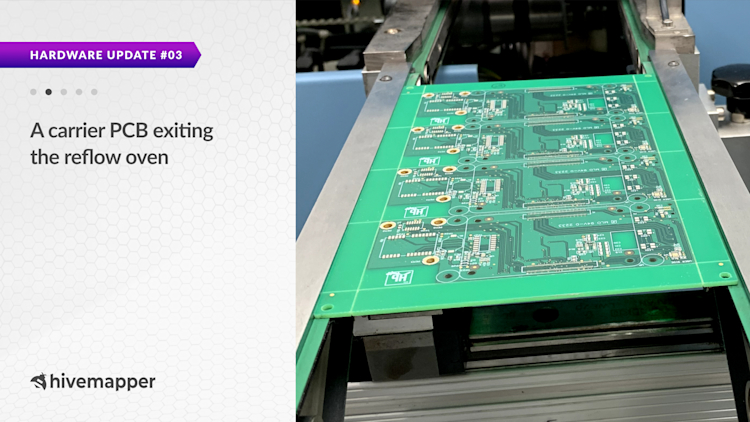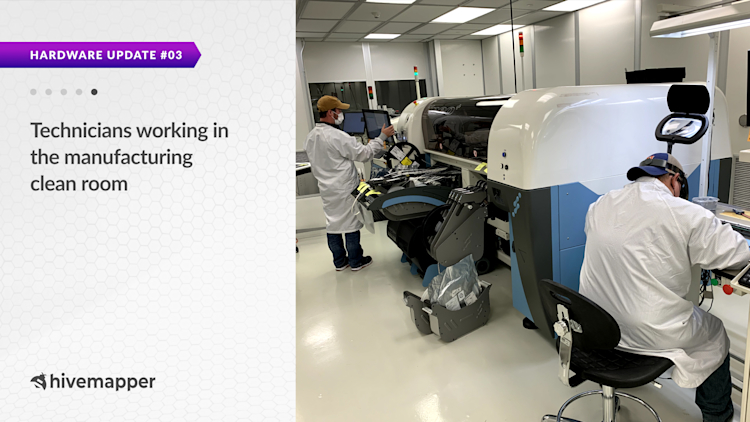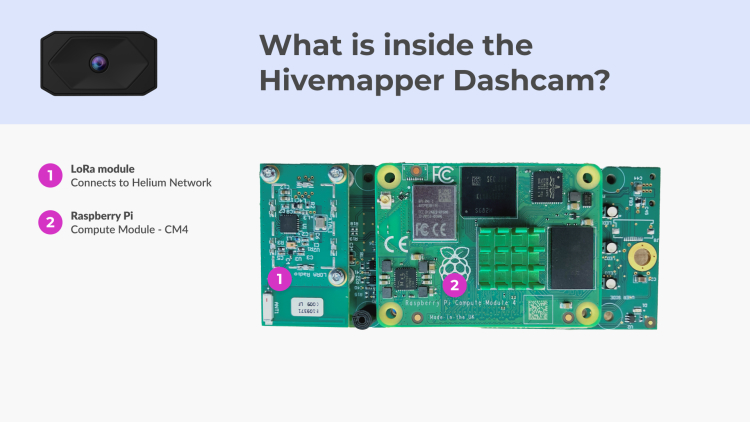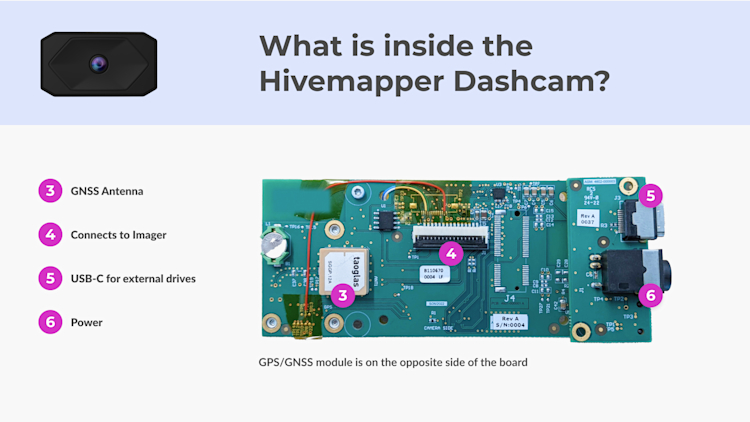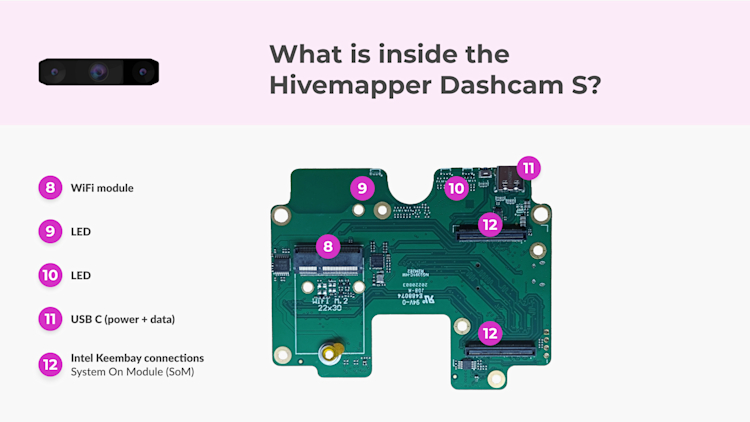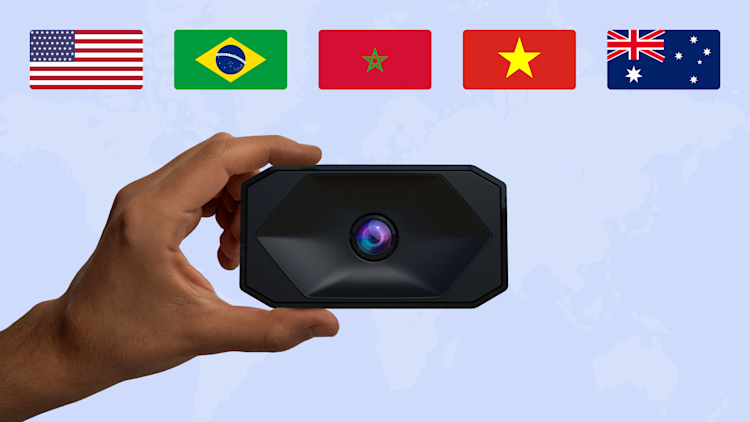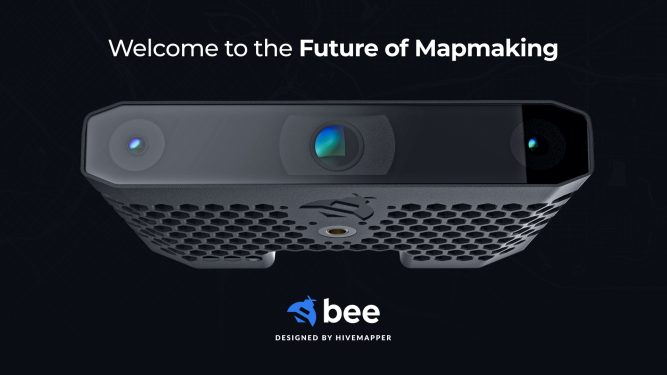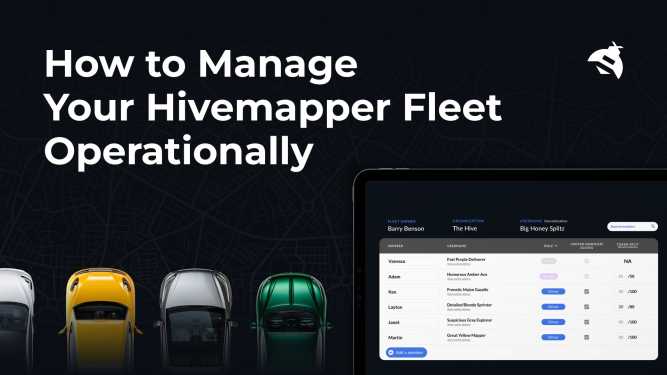The Latest Buzz
Hardware Update #3
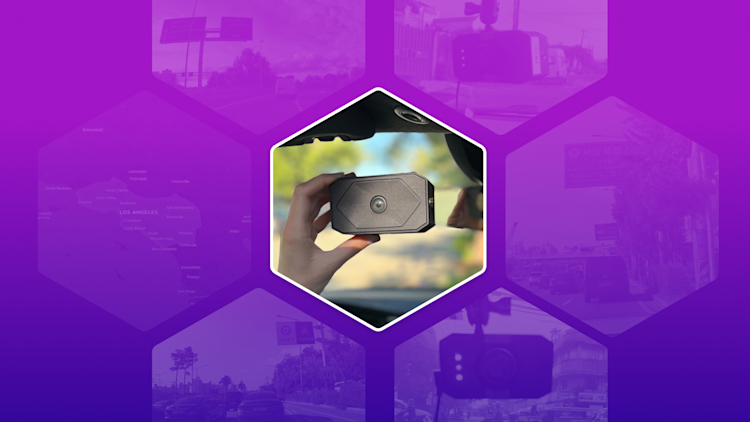
We now have a production prototype that has all the fixes we outlined in hardware update #2 and we believe solves the issues we reported in hardware update #1. Due to positive device performance reports, we’re continuing to the next phase of our hardware and validation process. In this phase, we’ll release a bigger batch of units for additional testing and we’ll observe device performance based on KPIs such as GNSS fidelity across different regions of the world, image quality, and other metrics. Once we complete this stage successfully, we’ll enter the testent phase.
During our testnet phase, we’ll ship a batch of dashcams based on a “first to pre-order, first to ship” basis. Everyone in the testnet phase will be able to map, annotate, and QA globally, but will only be able to earn test tokens. Learn more here.
Video: PCB exiting the reflow oven with all components soldered to the board
A look inside the Hivemapper Dashcam and Hivemapper Dashcam S
Now, let’s take a detailed look at what’s on our Hivemapper Dashcam and Hivemapper Dashcam S printed circuit board (PCB) prototypes. Refer to our previous hardware updates for our progress. The images below are from prototype devices and some portions contain PCB rework that was done to refine performance and integrate field tester feedback. We are always looking for more testers in certain parts of the world to stress-test our devices. See the list at the bottom of this blog article.
1. The custom LoRa module enables the Hivemapper Dashcam to connect to the Helium Network and send data packets to Helium hotspots around the world. We’ve designed the GNSS antenna to work in the 860-925 MHz range such that a single board will be able to work in the majority of the world (China excluded). Read more about how Hivemapper uses Helium for location verification here.
2. Powerful compute resource with low power consumption.
3. The taoglas antenna works very well with the M9N UBLOX GNSS module.
4. This is a flat flex cable (FFC) connector that attaches to a Raspberry Pi imager module containing the Sony IMX477 CMOS sensor that enables the Hivemapper Dashcma to capture 4K imagery at 10 fps.
5. The Hivemapper Dashcam is able to store captured imagery using the USB-C data port and our contributors can retrieve this data using a flash drive. We believe our contributors should have access to the data they upload to the Hivemapper Network.
6. The power adaptor connects power to the Hivemapper Dashcam via an included car cigarette-lighter charger.
- The RGB-D Camera FFC connector (1 & 5) enables the Hivemapper Dashcam S to use stereo vision for depth sensing.
- Similar to the Hivemapper Dashcam, the Hivemapper Dashcam S will also be able to connect to the Helium network.
- A 4K camera connects to the Hivemapper Dashcam S via a FFC connector.
- The GNSS battery power backup allows faster satellite lock times as it is able to retain ephemeral satellite and almanac data.
- The RGB-D Camera FFC connector (1 & 5) enables the Hivemapper Dashcam S to use stereo vision for depth sensing.
- Both the Hivemapper Dashcam and Hivemapper Dashcam S use the M9N UBLOX GNSS module for accurate and precise positioning.
- The taoglas antenna works very well with the M9N UBLOX GNSS module.
8. The Hivemapper Dashcam S uses an M.2 connector to attach a wifi module that enables it to connect to the Hivemapper iOS/Android application.
9. The LEDs on the Hivemapper Dashcam S provide the user real-time indications of their dashcam operations.
10. The LEDs on the Hivemapper Dashcam S provide the user real-time indications of their dashcam operations.
11. The Hivemapper Dashcam S requires a single USB-C connection for both power and data transfer. The Hivemapper Dashcam S will ship with a custom car charger and flash drive that enable the user to store data as well as power the device with minimal wires.
12. The Hivemapper Dashcam S uses a 3rd generation Movidius (KeemBay) chip, which enables it to run ML/CV models directly onboard.
Testing the new Hivemapper Explorer for the Mapping Network
The world is divided into regions and the key metrics* (coverage, activity, and resiliency) for each region are surfaced in the explorer. Our team is cranking hard to get this live. *data is an example only.
Would you like to test the world's first crypto miner dashcam?
We are looking for testers across continents to test the robustness of the GNSS signal and the stability of the system in different environments and climates.
See our recent Twitter thread with more details. We’re looking for testers in these cities:
- Las Vegas, US
- Alaska, US
- São Paulo, Brazil
- Marrakesh, Morocco
- Hồ Chí Minh, Vietnam
- Sydney, Australia
Testers are collecting 4K street-level imagery with the Hivemapper Dashcam around the world
Share Post


